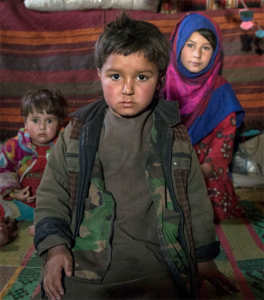Afghan economic crisis worsening
Afghanistan faces a budget deficit of 44 billion Afghanis, or $US501 million, this year as, the country continues to struggle with dual economic and humanitarian crises.
Taliban authorities have revealed the gap between expected spending revenues and spending, without saying how they will meet the shortfall.
 Announcing the first national budget since the Taliban took control of the war-torn country in August last year, Deputy Prime Minister Abdul Salam Hanafi said the government had predicted spending of 231.4 billion Afghanis and domestic revenue of 186.7 billion.
Announcing the first national budget since the Taliban took control of the war-torn country in August last year, Deputy Prime Minister Abdul Salam Hanafi said the government had predicted spending of 231.4 billion Afghanis and domestic revenue of 186.7 billion.
“The revenues are collections from departments related to customs, ministries and mines,” a government spokesperson said in a statement.
Since the 2001 US-led invasion of Afghanistan, successive Western-backed governments relied mostly on foreign aid.
But in August 2021, coalition forces, led by the US, withdrew from Afghanistan, triggering the collapse of the government and a Taliban takeover.
Most countries are yet to officially recognise the Taliban government and foreign aid has stopped flowing.
The country is dealing with rising security issues and an economic meltdown, while aid agencies struggle with how to help 50 million Afghans without giving the Taliban access to funds.
Hanafi said the budget for the current financial year, which runs until next February, had been approved by the council of ministries and confirmed by the Taliban’s supreme leader Haibatullah Akhunzada.
The budget announcement said development works would take up 27.9 billion Afghanis but there was no breakdown of spending on areas such as defence.
“We have paid attention to education, technical education, and higher education and our all focus is on how to pave the way education for everyone,” Mr Hanafi said.
Taliban authorities are yet to allow the restarting of older girls’ education across the country after committing to a start date earlier this year.
An economic collapse in the wake of the Taliban’s return to power, drought and the COVID-19 pandemic in Afghanistan has pushed more than 20 million people into food insecurity.
Five and a half million people internally displaced – roughly the population of Finland – including more than 670,000 forced to leave their homes so far this year, 60 per cent of whom are children.
The UN says aid and support is needed for mobile populations, including internally displaced people, returnees and under-served host communities.
More than half the population, or nearly 19 million people, are struggling to eat, malnutrition is reaching dramatic levels, especially for many children, and more than 80 per cent of the people surveyed by the UN say they have lost their jobs and livelihoods.
Millions are living in inadequate shelters with limited access to basic services, including sanitation and health care.
The mainly Western nations that backed the deposed Afghan government have taken recent small steps to restore frozen development funds and remove anti-Taliban sanctions.
But observers say the main problem remains is that governments don’t have a clear plan to deal with the Taliban, and that is exacerbating the humanitarian emergency.












